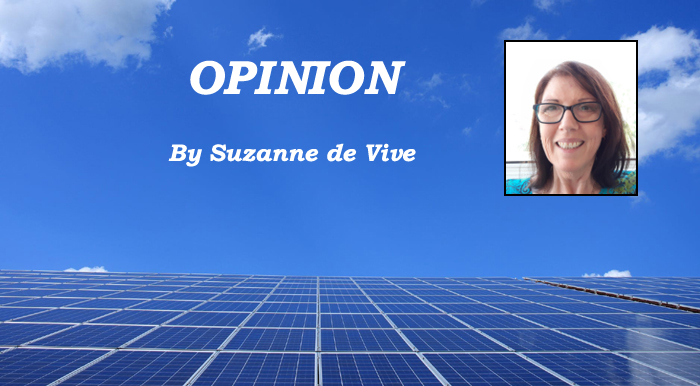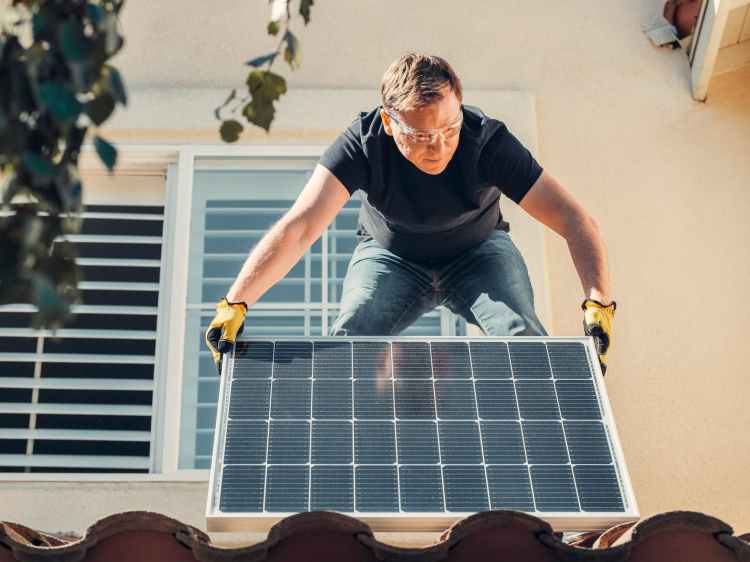
Suzanne de Vive has a strong corporate and diverse academic background encompassing neuroscience, sustainability, executive coaching, and a Diploma in Town Planning which saw achievements in sustainable neighbourhood designs. A resident of Thirroul, she now heads Vive Think offering tools and training to empower organisations to cultivate innovative thinking and create sustainable solutions.
By Suzanne de Vive
The recent approval of a new coalmine by the Federal Government appears absurd, considering the urgent climate crisis we are facing. However, this coalmine is essential for steel production as it produces metallurgical coal. Although some aspects of steel production can be made environmentally friendly, we still rely on mining for metallurgical coal throughout the steel production process.
Environmental groups understandably express concerns about the impact on the environment, climate change consequences, and harm to wildlife and water ecosystems. However, it’s important to note that metallurgical coal is needed specifically for steel production, not for general energy generation in coal-fired power plants. This is where we can make a significant impact.
The key lies in shifting our cultural mindset from “expand and exploit” to “minimise and protect.” Even when expansion is necessary, we can still work towards minimising negative effects and protecting the environment. One effective approach in our local environment is to create dual-purpose infrastructure instead of single-purpose solutions.
Now, let’s consider the connection to the Northern Illawarra. The government says it will evaluate each mine application based on individual needs. So, how can we address this issue without sacrificing our lifestyles?
According to the government, households account for 24 percent of energy use in Australia, with heating and cooling comprising up to 50 percent of that consumption. However, as I drive around the Northern Illawarra, I notice a concerning lack of solar panels on rooftops. Some north-facing roofs only have partial coverage, which could be enough to meet the energy demands of those households. It’s clear that fully covering large north-facing roofs with solar panels would not only meet these households’ energy needs but also generate surplus electricity to share with others. On the other hand, I see plenty of south-facing roof space on architecturally designed houses, which limits the harnessing of solar energy. Additionally, some new subdivisions fail to optimise solar potential through strategic street orientation and lot placement, and there is a lack of landscaping that would promote desirable temperatures, affecting both household needs and wildlife by providing food and shelter.
Let’s take a row of townhouses running north to south as an example with a typical east-west gable roof covering the whole row. If both sides of the townhouse’s roof were covered in solar panels, it could likely supply all of its energy needs. Imagine a roof design with a north-facing pitch over each individual townhouse, increasing solar power generation by 15 percent providing surplus energy to the grid. Such a design could incorporate architectural features like Structural Insulating Panels (SIPs) with high insulation ratings for the roof, eliminating the need for conventional roof space and insulation. Choosing higher-rated SIPs becomes crucial in rising temperatures.

These SIPs would allow for beautiful raked ceilings and strategically placed clerestory windows, reducing reliance on electric lighting and saving power usage while generating additional surplus electricity. While new builds currently require a seven-star rating, attaining an additional star further reduces heating and cooling needs by 30 percent, thus providing even more surplus energy. By implementing a slanted ceiling with the SIP, a natural vent system can draw in cool air from the ground and vent hot air from the top, potentially eliminating the need for power-generated cooling in summer.
North-facing large windows can be used to create natural heating in winter. Additionally, shading for west-facing windows can be provided through awnings or shutters, which can have photovoltaic capabilities. These measures significantly reduce energy usage, optimise roof orientation for solar energy production, and, when combined with solar batteries for storage, households can not only eliminate their energy consumption from the grid but also generate surplus power to contribute back.
Installing energy-generating heat pumps in each townhouse, as well as incorporating solar power generating windows and paint, can further contribute to the surplus. Replicating these initiatives across all new subdivisions can transform our suburbs into “power suburbs” that generate electricity and income, making traditional large-scale electricity-producing power stations unnecessary.
Many houses in new subdivisions are spacious, with large roof expanses. If these houses were designed as eight-star rated homes with properly oriented architecturally designed north-facing roofs covered in photovoltaic panels, along with other solar initiatives, the electricity produced would far exceed the household’s needs and contribute significantly to the energy grid. Just imagine the potential surplus power from purposefully designed electricity-generating houses in well-designed subdivisions that tackle our current challenges head-on. It’s not inconceivable that well-designed, purpose-built new housing subdivisions could generate far more electricity than they need, perhaps up to double, providing substantial electricity to the grid, thanks to advancements in solar technology, architectural products, innovative planning design, and comprehensive policy initiatives.
Since there are a number of new subdivisions slated for the Northern Illawarra, why not create these as dual-purpose, energy-producing neighbourhoods that address both the housing and energy crisis while at the same time, minimise impact and protect the environment?
I’m not suggesting that households take on the responsibility of supplying the remaining 76 percent of energy consumption after eliminating their 24 percent. However, they can potentially contribute a significant amount to the grid rather than just being consumers.
To further amplify this transformation, similar photovoltaic initiatives should be integrated into infrastructure such as libraries, bus shelters, schools, and office buildings. Additionally, incorporating heat pumps in infrastructure and buildings, as well as installing wind turbines on taller buildings, can generate even more kilowatts of electricity for the Northern Illawarra.
The potential is limited only by our lack of innovative forward-thinking. Moreover, our region is blessed with a major freeway where daily car usage creates wind turbulence that could be harnessed by wind turbines, powering streetlights or more.
Simultaneously, our housing crisis, population growth, and immigration policies contribute to a continuous need for expansion. Unfortunately, this has resulted in ill-designed single-purpose housing subdivisions and quick-fix solutions such as new knockdown rebuilds, duplexes, and townhouses on existing lots, all increasing energy demand in our area. Instead of increasing energy consumption, these developments and new builds could become energy producers. If we continue to look outside of our existing footprint or the footprint we need to live on in order to produce electricity, where will it end? The population is still growing. It’s inconceivable to think that we should just keep expanding our footprint indefinitely to meet our ever-increasing energy needs.
For this vision to become a reality, our council, along with state and federal governments, must implement policies, schemes, and financial incentives that promote this necessary change in thinking and action. Our current policies, planning, and methods only bring about minor changes at every level of government. While these may have been effective in the past, they are inadequate for the future.
Adding to the confusion, the government offers cheap loans and incentives for homeowners to renovate existing homes to increase the star rating for energy efficiency, reduce heating and cooling costs, and subsidise solar installations. It’s evident that one section of the government recognises the need for higher star ratings and house orientation. Yet, providing these incentives and subsidies after the house is built generates more waste.
Why not change policy to mandate an eight-star rating and offer incentives and subsidies during the construction phase? Additionally, rather than merely providing advice on government websites about optimal house orientation, policies should mandate that developers ensure sufficient potential for achieving these goals, with well-designed subdivisions that maximize solar potential, incorporate appropriate landscaping, and consider energy efficiency and production in housing and roof design. These initiatives could become policy.
Due to inadequate policies, grassroots movements are emerging. In the Northern Illawarra, a group known as E2515 has inspired many residents in that postcode (Thirroul) to take action.
Enthused by Saul Griffith’s book “Electrify,” which outlines the economic and environmental benefits of electrifying households and eliminating appliances using non-renewable fuels like gas, this group actively seeks ways to incorporate more solar power into their homes and is seeking support from the council to achieve their energy-saving and energy-producing initiatives, including the implementation of neighbourhood solar batteries to become self-sufficient.
The Renew Illawarra Network is another group comprising knowledgeable individuals who have produced comprehensive documents demonstrating how climate change can be mitigated and carbon emissions reduced in the Northern Illawarra. Power-generating neighbourhoods can be added to the ideas being spawned by the people of the Northern Illawarra.
Clearly, innovative thinkers exist among us, but unfortunately, they seem absent from the halls of power. Regrettably, our local, state, and federal governments cling to old patterns of thinking focused on “expand and exploit” rather than “minimise and protect”. They are unwilling to embrace new and innovative ways of meeting our energy needs, persisting in the belief that large-scale power sources are necessary to supply the 24 percent of total energy needs for households and beyond. Perhaps they lack knowledge of solar advancements that could see that 24 percent usage not only met by households with solar, but also far exceeded, transforming households into the new “power suburbs” that negate our necessity for traditional “power stations”.
Imagine no electricity bills but an income from electricity production instead. Or is the problem that there is no large corporate entity profiting from innovative design initiatives, thus reducing political contribution potential? Or is it just lack of innovative thinking? In power suburbs, the financial beneficiaries are the householders themselves. It simply requires a shift in perspective.
Free subscription to The Bulli & Clifton Times
PAYPAL TIP JAR
YOU can support The Bulli & Clifton Times and/or the Looking Back local history websites with a donation through PayPal. Your generous patronage of my work and research, however small it appears to you, will greatly help me with my continuing costs, and help support independent journalism and local news media. You can leave a small donation here of $2, or several small donations, just increase the amount as you like. Your support helps provide an independent and free source of local news and information.
A$2.00
OR DONATE BY DEBIT OR CREDIT CARD
Don’t have PayPal? Instead, you can support The Bulli & Clifton Times by leaving a secure $2 debit or credit card donation. Your generous patronage of my work and research, however small it appears to you, will greatly help with my continuing publication costs.

Discussion
No comments yet.